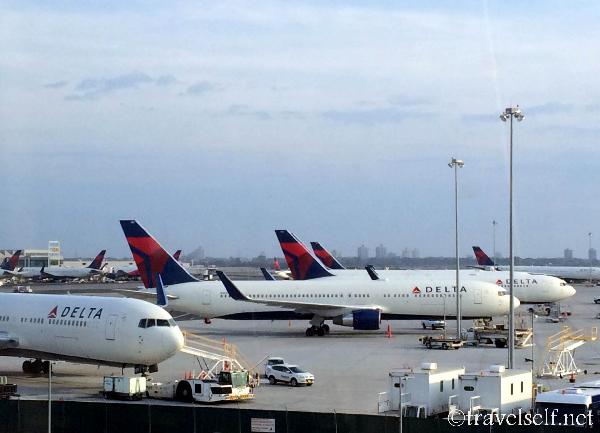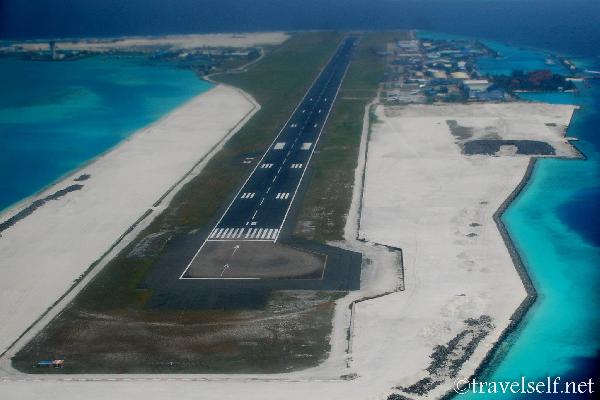Non-flying weather or when planes do not fly?
Non-flying weather or when planes do not fly?
A flight delay or cancellation due to " bad weather " is an unpleasant fact, but sometimes it happens. And with all the indignation of passengers and the desire to fly away, there are certain conditions when a decision is made to take off or not to take off.

Interestingly, the idea of "non-flying weather" for passengers and pilots can sometimes be very different. What is “heavy fog” for a passenger may turn out to be “a veil over which a bright sun shines” for a pilot. And in the same way, what is “normal weather” for the passenger, for the pilot “the inability to land the plane at the destination due to strong crosswinds and icing on the runway.”
"Non-flying weather" is not just a natural phenomenon, like a downpour, heavy snowfall or fog.
This term refers to several factors, such as:
- technical parameters of the aircraft,
- technical equipment and condition of a particular airport,
- professional training of pilots,
- direct weather conditions.
The technical parameters of the aircraft are the data set by the manufacturer, under which the safe operation of the aircraft is possible. That is, for example, if the airport is well equipped and can handle flights in heavy fog, and a particular aircraft is not equipped with sufficiently modern navigation devices for landing in very low visibility conditions, then the flight cannot be operated. Since a 100% successful landing cannot be guaranteed, and this poses a threat to passengers and crew. Roughly speaking, the aircraft on instruments may "not see" the runway.
As for the technical equipment of the airport, it takes into account the lighting and radio navigation equipment, the condition of a particular runway, as well as the area where this same runway is located. For example,
Maldives Airport is a single runway on an island in the open ocean.

Runway at Hulule Airport, Maldives
There are airfields equipped with the latest technical innovations, and they can receive flights in conditions of almost zero visibility. And there are airports where the minimum visibility should be, for example, 600 or 800m. And even if the aircraft is equipped with the latest technology, in conditions of poor visibility, the flight to this airport cannot be performed.
When performing any flight, of course, the professional training of pilots is taken into account. It is not enough that the aircraft be "the latest model with all the technical innovations." It would be nice if the pilots knew how to use these same innovations and had supporting documents. Then, "and we will fly away into the fog, and we will sit down in the rain."
Well, the most interesting thing is the weather .
By weather conditions, we passengers, as a rule, mean heavy rain or snowfall, strong wind, hail, lightning, fog.
For pilots, three factors are decisive:
- the condition of the runway ,
- the condition of the runway ,
- visibility ,
- wind.
The condition of a runway is both the condition of the runway itself and the consequences of weather conditions on that runway, such as icing or heavy snowfall, which can negate all the work of cleaning the runway. Under such conditions, takeoff and landing may be impossible.
Visibility is affected by fog, rain, snow, dust, smoke, in general, everything that lowers this very visibility. And it is not so important what exactly caused the poor visibility. The main thing is how well the runway is visible in specific conditions.
Here it is still necessary to clarify such a moment as the height of the decision, or, as they say, the point of no return - this is the height to which, when descending, the pilot can still go around. That is, before this altitude, the pilot must decide whether he can land or is forced to climb again.
Wind is a very important factor influencing the decision "to take off or not to take off". Side wind can be a danger, because to compensate for it you have to turn the plane a little into the wind. And when landing, at the moment of adhesion to the runway, the aircraft must be sharply turned around and directed along the axis of the landing line, which can be difficult to do.
The direction of the wind is also of great importance. Planes take off and land against the wind. This reduces the takeoff and run distance, that is, it allows you to take off earlier during takeoff or reduce the speed of the aircraft faster during landing.
But there are airports where it is impossible to change the direction of takeoff / landing due to geographical features. For example, on one side of the runway the sea, on the other - the mountains. If the wind blows towards the sea, then it is possible to land (towards the mountains), but it is no longer possible to take off (a tailwind does not make it possible to quickly get off the ground). Therefore, it is sometimes not clear to passengers why some planes fly (that is, they land), while others do not (that is, they do not take off).
There is one more nuance in the question “to fly or not to fly”. All flights are conditionally divided into 2 categories: flight duration up to 2 hours and more than 2 hours. In the first case (for short distances), pilots are allowed to rely on the actual weather and ignore the forecast. In the second option (long distances), they are guided, first of all, by the forecast, and only then they look at the actual weather at the airfield.
The final decision on takeoff and landing is always made by the aircraft commander.
And if he decides not to fly, trust me, it's for your own good.
Don't blame the airline, or the pilots, or the airport, but thank everyone for your life.
Travel safely!
And have a good rest!
info.travelself@gmail.com
<<
Useful information ... >>

 Helpful information
Helpful information

